Afghanistan has long held a tradition of assembly or jirga to discuss social and political issues in accordance with the teachings of the prophet Mohammad. However, with the recent establishment of a post-Taliban democratic government, the National Assembly adopted its current formalized structure. The shape of this new legislature was set out in a constitution approved by a meeting of provincial and district council leaders in January 2004, called the loya jirga. With substantial power to check the president, the Assembly is an elected, bicameral parliament made up of a lower house – Wolesi Jirga, or House of People – and an upper house – Meshrano Jirga, or House of Elders.
In September 2005, the first parliamentary elections since 1971 were held to fill the Assembly’s seats. More than 2,700 candidates (including 328 women) ran for parliament and more than half of the country’s 12.5 million registered voters turned out for the election. The resulting parliamentarians run the gamut from ex-mujahedeen and Taliban commanders to progressive former communists. As the highest legislative body in the land, it is the responsibility of the National Assembly to express the will of the Afghan people. According to the Afghan Constitution, its main functions are drafting and enacting legislation, supervising and overseeing the Executive Branch, approving state budgets, creating administrative units, reviewing presidential appointments and ratifying international agreements and treaties. The Assembly convenes in Kabul for two ordinary sessions each year, lasting no more than nine months.
| STRUCTURE | |
|---|---|
| Wolesi Jirga | Meshrano Jirga |
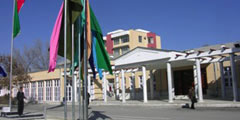
The Wolesi Jirga consists of 249 directly elected provincial representatives. Each of Afghanistan’s 34 provinces represents a constituency and seats are allocated on the basis of population, with each province receiving a minimum of two seats. Parliamentarians must be over the age of 25, a citizen of Afghanistan, a registered voter, and never been convicted by a court for crimes against humanity. At least 68 of those elected (two from each of the 34 provinces) should be female, giving women 25 percent of the seats in the lower house. Additionally, 10 seats are allotted to the Kuchi, or nomadic people of Afghanistan. Members are elected for a five year term. |
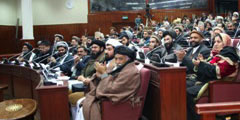
The Meshrano Jirga consists of 102 seats, indirectly elected or appointed as follows: 34 seats selected by provincial councils (one from each of the provincial districts); 34 selected by the nearly 400 district councils; and 34 appointed by the President. Members of the Meshrano Jirga should be at least 35 years of age, a citizen of Afghanistan and never been convicted by a court for crimes against humanity. At least 50 percent of the presidential appointees should be female, giving women a minimum of 17 seats in the upper house. There should also be two members representing the disabled community and two members from the Kuchi, or nomads. Provincial council members serve a term of four years; district council members serve a term of three years; and presidential appointees serve a term of five years. |
| POWERS | |
|---|---|
| Wolesi Jirga | Meshrano Jirga |
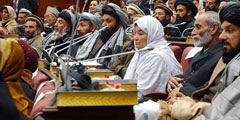
Proposals for new bills are first submitted to the Wolesi Jirga, whose members have one month to either approve or reject them by a two-thirds majority before forwarding them to the Meshrano Jirga. In the case that a bill approved by both houses is then rejected by the president, it will be sent back to the Wolesi Jirga. If it is re-approved with two-thirds of the votes, the law will be considered enacted. In addition to creating and enacting legislation, the Wolesi Jirga may create special commissions to inquire about government actions; discuss and vote on no-confidence motions against government ministers; make decisions about government development programs and the nation’s annual budget; and approve or reject appointments according to the Constitution. This lower house of parliament has final say in the appointment of government ministers, the Attorney General, the head of the Central Bank, the National Security Director and the head of Red Crescent. The speaker of the Wolesi Jirga presides over joint sessions of the National Assembly. |
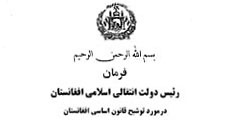
The Meshrano Jirga is considerably less powerful than the lower house, but like the Wolesi Jirga it also drafts, reviews and ratifies legislation, approves national budgets and generates development plans. Its determinations about state budgets and development programs can be overruled by the lower house. Once a bill is sent to the Meshrano Jirga from the Wolesi Jirga, the Meshrano Jirga has 15 days to decide if they will pass it or not. If they fail to decide, the law is considered approved by both houses. |
| ETHNIC COMPOSITION | |
|---|---|
| Wolesi Jirga | Meshrano Jirga |
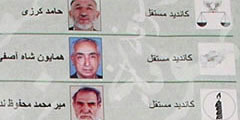
When making their selections for the Wolesi Jirga, Afghan voters cast their ballots predominantly along ethnic lines. Similar to the ethnic make-up of the country as a whole, Pashtuns constitute the largest group in the lower house (47.4%), followed by Tajiks/Aimaqs (21.3%), Hazaras (12%), Uzbeks/Turkmen (10%), Non-Hazara Shi’a (4.4%), Arabs (2%), Ismailis (1.2%), Pashais (.8%) Balochis (.4%) and Nuristanis (.4%). |
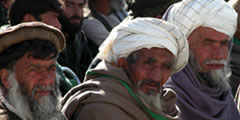
The Meshrano Jirga has approximately the same ethnic make-up as the Wolesi Jirga and Afghanistan at large with Pashtuns the largest group (35%), followed by Tajiks (31%), Hazaras (16%), Uzbeks/Turkmen (8%), Baluchis (3%), Nuristanis (3%) and others (3%). |
| POLITICAL PARTIES | |
|---|---|
| Wolesi Jirga | Meshrano Jirga |
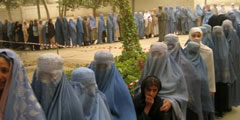
Candidates for the Wolesi Jirga were elected as individuals rather than party members. However, many parliamentarians are affiliated with political parties. About 50 of the 249 MPs could be described as radical Islamists, with another 50 considered conservative. The remainder is largely moderates made up of mujahedeen, royalists, tribal nationalists, and a variety of prominent local personalities, but there is a group of about 50 who might be categorized as secular and reformist. While no one party holds a majority, the four largest are Hezb-e-Jamiat Islami Afghanistan (led by Burhanuddin Rabbani), Hezb-e-Junbesh-e-Milli Islami Afghanistan (led by Abdul Rashid Dostum), Hezb-e-Wahdat Islami-e-Mardum Afghanistan (led by Mohammad Mohaqiq) and Hezb-e-Afghanistan Naveen (led by Wolesi Jirga speaker, Yunus Qanuni). |
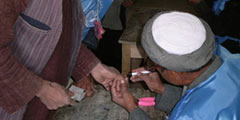
Due to the election/appointment method of the Meshrano Jirga’s composition, only about one-third of its members are affiliated with political parties and the upper house is weighted in favor of current President Karzai’s agenda. |
| KEY PLAYERS | |
|---|---|
| Wolesi Jirga | Meshrano Jirga |
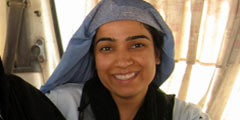
Yunus Qanuni, Speaker of the House Burhanuddin Rabbani Mohammed Mohaqiq Abdul Rassoul Sayyaf Malalai Joya |
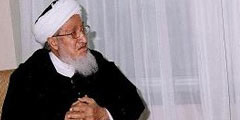
Sibghatullah Mojaddedi, Speaker of the House Marshall Mohammed Qasim Fahim Hamid Gaylani Arsala Rahmani |
SOURCES: Afghanistan Research and Evaluation Unit; BBC News; Congressional Research Service; Council on Foreign Relations; The Economist; Joint Electoral Management Body Secretariat; National Democratic Institute for International Affairs; Republic of Afghanistan; United Nations Assistance Mission in Afghanistan; U.S. Department of State; U.S. News & World Report.
